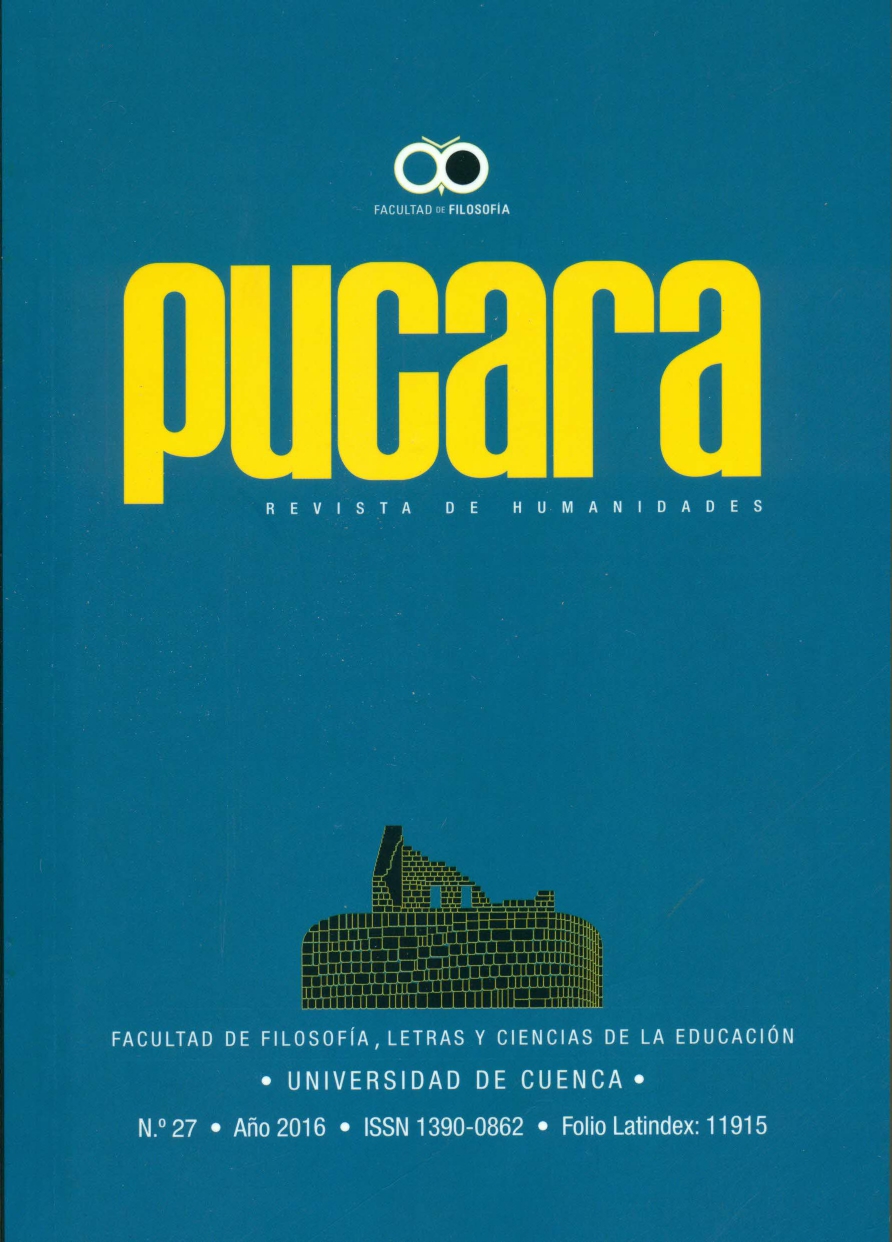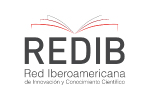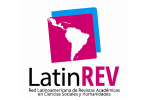Estereotipos de supremacía y subordinación en la creatividad ecuatoriana: un análisis imagológico de la escritura juvenil lojana
DOI:
https://doi.org/10.18537/puc.27.04Keywords:
stereotypes, supremacy, subordination, LojaAbstract
The specialists on Didactic and Cultural Studies define Creative Writing as a useful instrument to analyse the impact that stereotypes, present in the Children’s literature or juvenile literature, have in the collective imaginary of teenagers around the world. This text aspires to show the results obtained within the course of Oral and Written Expression (October-December 2014) at the Technical University of Loja, in which, by writing essays, poetry, tales and plays, the students show the way in which archetypes and literary motifs learned during their childhood have influenced their conception of the other and themselves. Additionally, this paper aims to show the way in which local culture and the perception of miscegenation have influenced in the creation of a cultural syncretism that combines Ecuadorian idiosyncrasy and foreign values. Consequently, this research will focus on the analyses of four stereotypes: the prince charming, the indigenous, the feminine protagonist, the evil woman.
Downloads
References
Caillavet, C. (1996). “Los Grupos Étnicos Prehispánicos Del Sur Del Ecuador Según Las Fuentes Etnohistoricas”. SE Moreno Yánez(compi.) Antropología del Ecuador. Memorias del Primer Sim-posio Europeo sobre Antropología del Ecuador, (p. 149-179). Quito: Abya-Yala.
Chiriboga, R. O. (2005). La herencia sefardita en la provincia de Loja. Loja: Casa de la Cultura Ecuatoriana. Clements, W. M. (2013). Imagining Geronimo: An Apache Icon in Popu-lar Culture. Albuquerque: University of New Mexico.
Echeverría, B. (2010). Modernidad y blanquitud. México D.F.: Ediciones Era.
García-Lago, V. (2002). “¿Educamos en prejuicios o educamos en valo-res?”. En Revista Educación y Futuro, 7, pp. 63-73.
Goodman, L. (Ed.). (2013). Literature and gender. London: Routledge.
Guzmán, M. L. (2013). “Etnicidad y exclusión en Ecuador: una mirada a partir del censo de población de 2001”. En Íconos-Revista de Ciencias Sociales, (17), pp. 116-132.
López Nárvaez, J. (2012). Análisis semiótico y discursivo de los grupos musicales La grupa y Curare como base para la construcción de la identidad mestiza ecuatoriana (Tesis de pregrado). Universi-dad Politécnica Salesiana, Quito. Recuperado de: http://dspace.ups.edu.ec/bitstream/123456789/2570/1/Tesis2.pdf
Lutz, H. (1990). “‘Indians’ and native Americans in the movies: A history of stereotypes, distortions, and displacements”. En Visual Anthropology, 3(1), pp. 31-48.
Marchand, D. (2013). L’Indien comme sujet politique: représentations autochtones et luttes pour le sens dans le discours politique au Mexique et en Équateur (Thèse soumise à la Faculté des études supérieures et postdoctorales dans le cadre des exigences du pro-gramme de maîtrise em Science politique). Université d’Ottawa, Ottawa. Recuperado de: https://www.ruor.uottawa.ca/bitstream/10393/23847/1/Marchand_Dominik_2013_these.pdf
Pineda-Dawe, M. (2012), Estereotipo, frontera y género. Una lectura ne-gociada de tres cintas de la India María, Montréal: Université de Montréal.
Pinza, B. (2014). Fisonomía, identidad y talento lojano. Loja: Casa de la Cultura Ecuatoriana.
Rivas, C. V. (2011). “The rise and fall of Mexico’s international image: Stereotypical identities, media strategies and diplomacy dile-mas”. En Place Branding and Public Diplomacy, 7(1), pp. 23-31.
Schuller, K. (2014). “Avatar and the Movements of Neocolonial Senti-mental Cinema”. Em Discourse, 35(2), pp. 177-193.
Wilkie-Stibbs, C. (2013). The feminine subject in children’s literature. London. Routledge.
Published
How to Cite
Issue
Section
License
Copyright (c) 2016 José Sarzi Amade, Leonor Taiano Campoverde

This work is licensed under a Creative Commons Attribution-NonCommercial-ShareAlike 4.0 International License.
Copyright © Autors.

You are free to:
 |
Share — copy and redistribute the material in any medium or format |
 |
Adapt — remix, transform, and build upon the material for any purpose, even commercially. |
Under the following conditions:
 |
Attribution — You must give appropriate credit, provide a link to the licence, and indicate if changes were made. You may do so in any reasonable manner, but not in any way that suggests the licenser endorses you or your use. |
| NonCommercial — You may not use the material for commercial purposes. | |
| ShareAlike — If you remix, transform, or build upon the material, you must distribute your contributions under the same license as the original. |
| No additional restrictions — You may not apply legal terms or technological measures that legally restrict others from doing anything the licence permits. |












